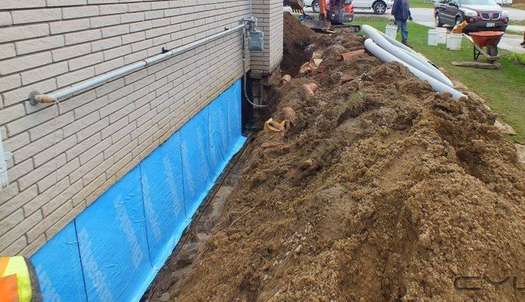Water-proofing is a crucial aspect of maintaining any home or property, yet it often goes ignored until concerns arise. As moisture invades facilities, it can result in costly repairs, compromised safety, and even health risks due to fungus and fungal growth. Comprehending the importance of water-proofing is essential for every property owner, as it not only shields against prompt damage but also enhances the overall lifespan and value of a property.
This resource explores the fundamentals behind waterproofing, shedding light on why it is essential, the various methods available, and how efficient water-proofing can protect you a fortune in future repairs. Moreover, we will debunk frequent myths surrounding water-proofing techniques and equip you with the information to recognize indicators that your place may demand attention. Whether you are planning to waterproof your lower level, ceiling, or wet room, understanding the principles of waterproofing will allow you to make educated decisions for your property.
The Importance of Waterproofing in Homes and Buildings
Moisture protection is a critical aspect of maintaining the integrity and durability of homes and buildings. It acts as a shield against moisture infiltration, which can lead to a variety of problems, including damage to the structure, the growth of mold, and health problems. Without adequate waterproofing, properties are vulnerable to damage caused by water that can undermine not only the physical integrity but also the quality of indoor air. This makes waterproofing crucial for ensuring a safe and wholesome living environment.

In furthermore to protecting against water damage, waterproofing can result in significant savings in costs over the long term. Fixing water damage usually requires extensive work, from structural repairs to mold remediation, which can be financially burdensome. By proactively waterproofing a property, homeowners and managers of buildings can avoid these issues from arising, effectively saving thousands of dollars in potential repairs. This preventive measure is an expenditure that yields returns in the long run, reinforcing the importance of addressing waterproofing needs early.
Moreover, proper waterproofing plays a role in energy conservation within a building. By keeping waterproofing Toronto out, buildings can maintain consistent temperatures, lowering the need for excessive heating or cooling. This not only lowers energy costs but also improves overall comfort. As energy efficiency becomes ever more important, the function of waterproofing in eco-friendly building practices is clear, making it a critical factor for both newly constructed and existing structures.
Essential Waterproofing Methods and Strategies
One of the most powerful techniques for moisture-proofing is the use of barrier systems, which create a defense against moisture intrusion. These systems can include customized membranes applied to both inside and outside surfaces, such as walls and foundations. By sealing off potential entry points, these protections prevent moisture from penetrating the building, reducing the likelihood of moisture damage substantially. Choosing the appropriate type of membrane for your individual needs is important, as different materials offer varying levels of durability and resistance.
Another vital strategy is effective water management management. Installing a adequately planned drainage system around your property can redirect moisture away from vulnerable areas, such as basements and foundations. investigate this site can include French drains, water pumps, and drain pipes that are directed away from the structure. Effective drainage not only minimizes water accumulation but also enhances the durability of waterproofing systems and protects your property from the harmful effects of water damage and dampness.
In addition to protection systems and drainage, the application of waterproof coatings is vital for enhancing the protection of surfaces prone to water exposure. These coatings can be used on ceilings, partitions, and patios to create a waterproof layer that resists moisture and prevents mold development. Selecting the appropriate coating is critical to ensure it withstands environmental conditions, thus extending the lifespan of your waterproofing solutions. Regular maintenance and inspections are also important to ensure that these protective measures remain effective over time.
Financial Repercussions of Neglecting Waterproofing
Ignoring waterproofing can lead to substantial financial repercussions for homeowners and building managers. Water damage can threaten structural integrity, necessitating costly repairs or even renovations. A single leak can transform into extensive damage, affecting walls, floors, and foundations. This not only inflates repair costs but can also lead to a drop in property value, making any future transfer more difficult.
In addition to structural repairs, the costs connected to mold and mildew removal can add up quickly. Mold grows in damp conditions, leading to possible health risks and necessitating professional remediation services. The longer the moisture issue lasts, the more extensive the damage becomes, ultimately costing considerably more than initial waterproofing measures would have.
Moreover, disregarding waterproofing can result in increased energy bills. Damp building materials can lead to greater energy loss, forcing HVAC systems to exert more to maintain comfortable temperatures. By putting money into waterproofing solutions from the start, property owners not only save money on repairs but also enjoy sustained savings on energy costs, enhancing overall building efficiency.
